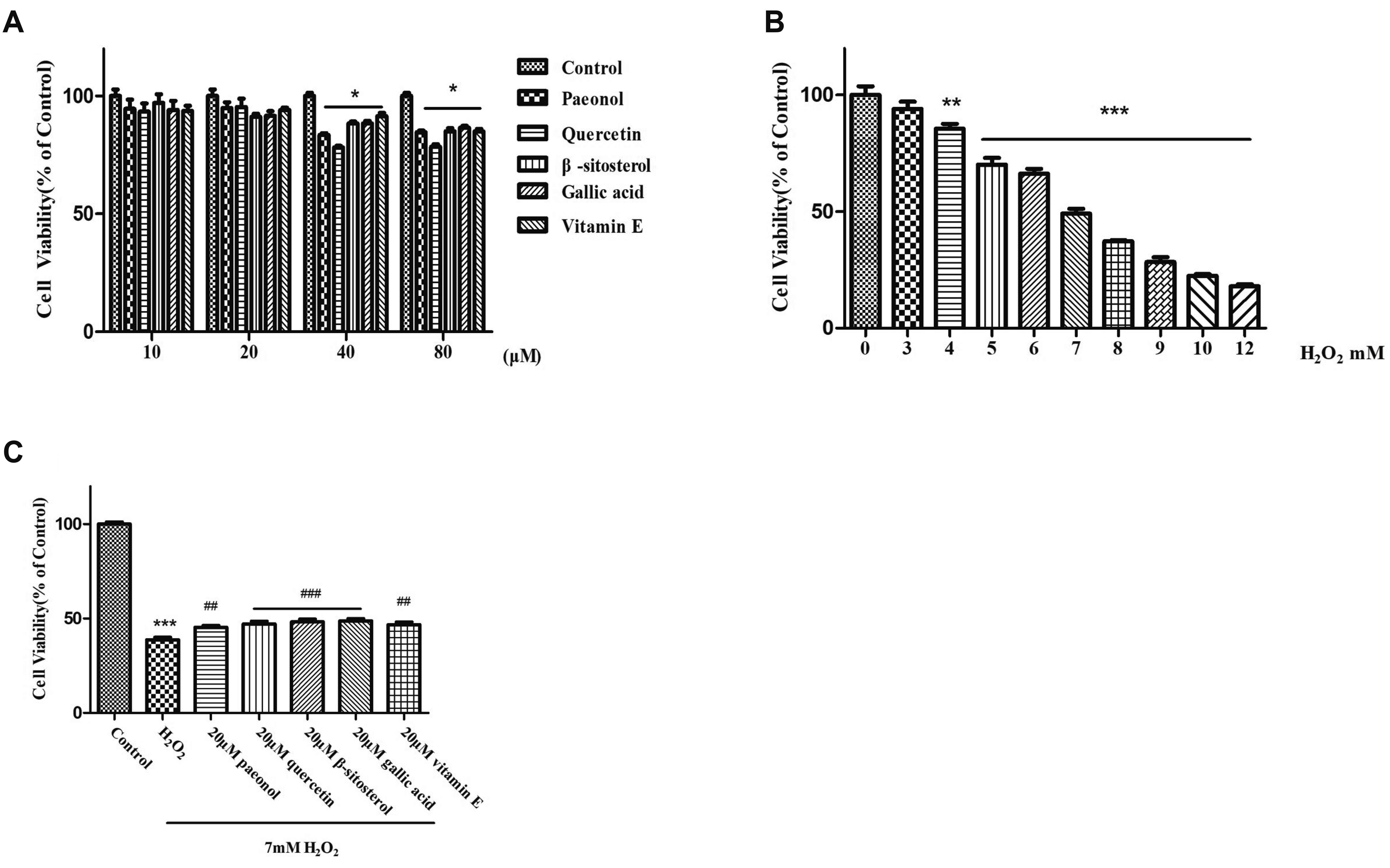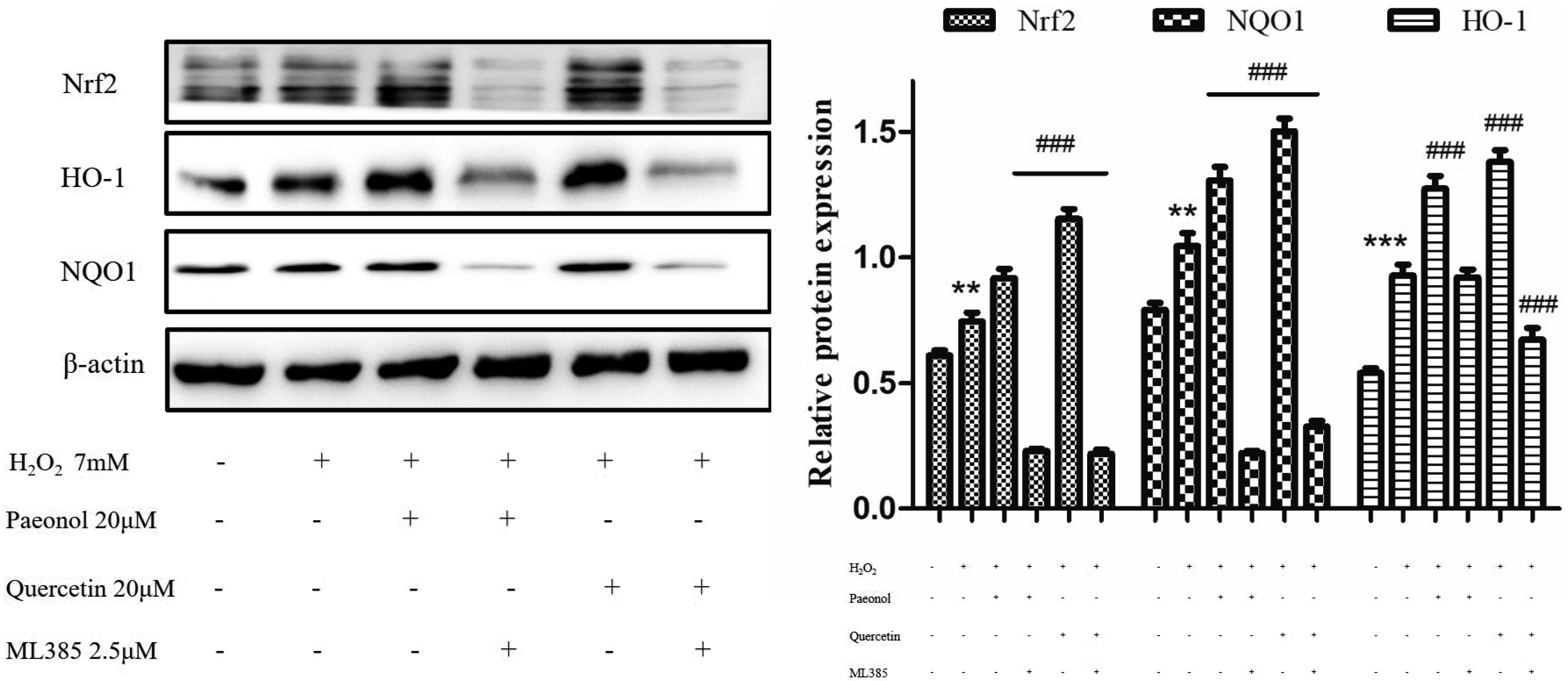3. Wang P, Gao YM, Sun X, Guo N, Li J, Wang W, Yao LP, Fu YJ. 2017; Hepatoprotective effect of 2'-O-galloylhyperin against oxidative stress-induced liver damage through induction of Nrf2/ARE-mediated antioxidant pathway. Food Chem Toxicol. 102:129–142. DOI:
10.1016/j.fct.2017.02.016. PMID:
28213291.
4. Zitka O, Skalickova S, Gumulec J, Masarik M, Adam V, Hubalek J, Trnkova L, Kruseova J, Eckschlager T, Kizek R. 2012; Redox status expressed as GSH:GSSG ratio as a marker for oxidative stress in paediatric tumour patients. Oncol Lett. 4:1247–1253. DOI:
10.3892/ol.2012.931. PMID:
23205122. PMCID:
PMC3506742.

5. Lin TA, Ke BJ, Cheng CS, Wang JJ, Wei BL, Lee CL. 2019; Red quinoa bran extracts protects against carbon tetrachloride-induced liver injury and fibrosis in mice via activation of antioxidative enzyme systems and blocking TGF-β1 pathway. Nutrients. 11:395. DOI:
10.3390/nu11020395. PMID:
30781895. PMCID:
PMC6412755.

6. Taguchi K, Motohashi H, Yamamoto M. 2011; Molecular mechanisms of the Keap1-Nrf2 pathway in stress response and cancer evolution. Genes Cells. 16:123–140. DOI:
10.1111/j.1365-2443.2010.01473.x. PMID:
21251164.

7. Su C, Xia X, Shi Q, Song X, Fu J, Xiao C, Chen H, Lu B, Sun Z, Wu S, Yang S, Li X, Ye X, Song E, Song Y. 2015; Neohesperidin dihydrochalcone versus CCl
4-induced hepatic injury through different mechanisms: the implication of free radical scavenging and Nrf2 activation. J Agric Food Chem. 63:5468–5475. DOI:
10.1021/acs.jafc.5b01750. PMID:
25978654.
8. Liu J, Sun H, Zhang A, Yan G, Han Y, Xue C, Zhou X, Shi H, Wang X. 2014; Serum pharmacochemistry combined with multiple data processing approach to screen the bioactive components and their metabolites in Mutan Cortex by ultra‐performance liquid chromatography tandem mass spectrometry. Biomed Chromatogr. 28:500–510. DOI:
10.1002/bmc.3060.

9. Lin MY, Lee YR, Chiang SY, Li YZ, Chen YS, Hsu CD, Liu YW. 2013; Cortex Moutan induces bladder cancer cell death via apoptosis and retards tumor growth in mouse bladders. Evid Based Complement Alternat Med. 2013:207279. DOI:
10.1155/2013/207279. PMID:
24282433. PMCID:
PMC3824643.

10. Oh GS, Pae HO, Oh H, Hong SG, Kim IK, Chai KY, Yun YG, Kwon TO, Chung HT. 2001; In vitro anti-proliferative effect of 1,2,3,4,6-penta-O-galloyl-beta-D-glucose on human hepatocellular carcinoma cell line, SK-HEP-1 cells. Cancer Lett. 174:17–24. DOI:
10.1016/S0304-3835(01)00680-2. PMID:
11675148.

11. Chen G, Zhang L, Zhu Y. 2006; Determination of glycosides and sugars in Moutan Cortex by capillary electrophoresis with electrochemical detection. J Pharm Biomed Anal. 41:129–134. DOI:
10.1016/j.jpba.2005.11.001. PMID:
16343840.

12. Li J, Li Y, Pan S, Zhang L, He L, Niu Y. 2019; Paeonol attenuates ligation-induced periodontitis in rats by inhibiting osteoclastogenesis via regulating Nrf2/NF-κB/NFATc1 signaling pathway. Biochimie. 156:129–137. DOI:
10.1016/j.biochi.2018.09.004. PMID:
30213522.

13. Li XY, Xu JD, Zhou SS, Kong M, Xu YY, Zou YT, Tang Y, Zhou L, Xu MZ, Xu J, Li SL. 2018; Time segment scanning-based quasi-multiple reaction monitoring mode by ultra-performance liquid chromatography coupled with quadrupole/time-of-flight mass spectrometry for quantitative determination of herbal medicines: Moutan Cortex, a case study. J Chromatogr A. 1581(1582):33–42. DOI:
10.1016/j.chroma.2018.10.047. PMID:
30389211.

14. Feng RB, Wang Y, He C, Yang Y, Wan JB. 2018; Gallic acid, a natural polyphenol, protects against tert-butyl hydroperoxide- induced hepatotoxicity by activating ERK-Nrf2-Keap1-mediated antioxidative response. Food Chem Toxicol. 119:479–488. DOI:
10.1016/j.fct.2017.10.033. PMID:
29066411.

15. Peng Z, Gong X, Yang Y, Huang L, Zhang Q, Zhang P, Wan R, Zhang B. 2017; Hepatoprotective effect of quercetin against LPS/d-GalN induced acute liver injury in mice by inhibiting the IKK/NF-κB and MAPK signal pathways. Int Immunopharmacol. 52:281–289. DOI:
10.1016/j.intimp.2017.09.022. PMID:
28963941.
16. Chen F, Mo K, Zhang Q, Fei S, Zu Y, Yang L. 2017; A novel approach for distillation of paeonol and simultaneous extraction of paeoniflorin by microwave irradiation using an ionic liquid solution as the reaction medium. Sep Purif Technol. 183:73–82. DOI:
10.1016/j.seppur.2017.03.069.

18. Li WH, Chang ST, Chang SC, Chang HT. 2008; Isolation of antibacterial diterpenoids from Cryptomeria japonica bark. Nat Prod Res. 22:1085–1093. DOI:
10.1080/14786410802267510. PMID:
18780250.
19. He L, She Z. 2017; Molecular structure identification and properties of gallic acid from galla chinensis. Chem Fiber Text Techol. 46:5–9.
20. Sun X, Wang P, Yao LP, Wang W, Gao YM, Zhang J, Fu YJ. 2018; Paeonol alleviated acute alcohol-induced liver injury via SIRT1/Nrf2/NF-κB signaling pathway. Environ Toxicol Pharmacol. 60:110–117. DOI:
10.1016/j.etap.2018.04.016. PMID:
29704732.

21. Surh YJ. 2003; Cancer chemoprevention with dietary phytochemicals. Nat Rev Cancer. 3:768–780. DOI:
10.1038/nrc1189. PMID:
14570043.

22. Pinheiro-Sant'ana HM, Guinazi M, Oliveira Dda S, Della Lucia CM, Reis Bde L, Brandão SC. 2011; Method for simultaneous analysis of eight vitamin E isomers in various foods by high performance liquid chromatography and fluorescence detection. J Chromatogr A. 1218:8496–8502. DOI:
10.1016/j.chroma.2011.09.067. PMID:
22014383.
23. Yen GC, Duh PD, Tsai HL. 2002; Antioxidant and pro-oxidant properties of ascorbic acid and gallic acid. Food Chem. 79:307–313. DOI:
10.1016/S0308-8146(02)00145-0.

24. Ho HH, Chang CS, Ho WC, Liao SY, Wu CH, Wang CJ. 2010; Anti-metastasis effects of gallic acid on gastric cancer cells involves inhibition of NF-kappaB activity and downregulation of PI3K/AKT/small GTPase signals. Food Chem Toxicol. 48:2508–2516. DOI:
10.1016/j.fct.2010.06.024. PMID:
20600540.
25. Hsiang CY, Hseu YC, Chang YC, Kumar KJ, Ho TY, Yang HL. 2013; Toona sinensis and its major bioactive compound gallic acid inhibit LPS-induced inflammation in nuclear factor-κB transgenic mice as evaluated by in vivo bioluminescence imaging. Food Chem. 136:426–434. DOI:
10.1016/j.foodchem.2012.08.009. PMID:
23122080.

27. Wei S, Chi J, Zhou M, Li R, Li Y, Luo J, Kong L. 2019; Anti-inflammatory lindenane sesquiterpeniods and dimers from Sarcandra glabra and its upregulating AKT/Nrf2/HO-1 signaling mechanism. Ind Crops Prod. 137:367–376. DOI:
10.1016/j.indcrop.2019.05.041.

28. Chen B, Lu Y, Chen Y, Cheng J. 2015; The role of Nrf2 in oxidative stress-induced endothelial injuries. J Endocrinol. 225:R83–R99. DOI:
10.1530/JOE-14-0662. PMID:
25918130.

29. Zhuang Y, Ma Q, Guo Y, Sun L. 2017; Protective effects of rambutan (
Nephelium lappaceum) peel phenolics on H2O
2-induced oxidative damages in HepG2 cells and D-galactose-induced aging mice. Food Chem Toxicol. 108(Pt B):554–562. DOI:
10.1016/j.fct.2017.01.022. PMID:
28137606.
30. Lyu Z, Ji X, Chen G, An B. 2019; Atractylodin ameliorates lipopolysaccharide and D-galactosamine-induced acute liver failure via the suppression of inflammation and oxidative stress. Int Immunopharmacol. 72:348–357. DOI:
10.1016/j.intimp.2019.04.005. PMID:
31030090.

32. Weber LW, Boll M, Stampfl A. 2003; Hepatotoxicity and mechanism of action of haloalkanes: carbon tetrachloride as a toxicological model. Crit Rev Toxicol. 33:105–136. DOI:
10.1080/713611034. PMID:
12708612.

33. Pham-Huy LA, He H, Pham-Huy C. 2008; Free radicals, antioxidants in disease and health. Int J Biomed Sci. 4:89–96. PMID:
23675073. PMCID:
PMC3614697.
35. Vuda M, D'Souza R, Upadhya S, Kumar V, Rao N, Kumar V, Boillat C, Mungli P. 2012; Hepatoprotective and antioxidant activity of aqueous extract of
Hybanthus enneaspermus against CCl4-induced liver injury in rats. Exp Toxicol Pathol. 64:855–859. DOI:
10.1016/j.etp.2011.03.006. PMID:
21478003.
36. Itoh K, Chiba T, Takahashi S, Ishii T, Igarashi K, Katoh Y, Oyake T, Hayashi N, Satoh K, Hatayama I, Yamamoto M, Nabeshima Y. 1997; An Nrf2/small Maf heterodimer mediates the induction of phase II detoxifying enzyme genes through antioxidant response elements. Biochem Biophys Res Commun. 236:313–322. DOI:
10.1006/bbrc.1997.6943. PMID:
9240432.

37. Chun KS, Kundu J, Kundu JK, Surh YJ. 2014; Targeting Nrf2-Keap1 signaling for chemoprevention of skin carcinogenesis with bioactive phytochemicals. Toxicol Lett. 229:73–84. DOI:
10.1016/j.toxlet.2014.05.018. PMID:
24875534.

38. Keum YS. 2011; Regulation of the Keap1/Nrf2 system by chemopreventive sulforaphane: implications of posttranslational modifications. Ann N Y Acad Sci. 1229:184–189. DOI:
10.1111/j.1749-6632.2011.06092.x. PMID:
21793854.

39. Lou Y, Guo Z, Zhu Y, Kong M, Zhang R, Lu L, Wu F, Liu Z, Wu J. 2019;
Houttuynia cordata Thunb. and its bioactive compound 2-undecanone significantly suppress benzo(a)pyrene-induced lung tumorigenesis by activating the Nrf2-HO-1/NQO-1 signaling pathway. J Exp Clin Cancer Res. 38:242. DOI:
10.1186/s13046-019-1255-3. PMID:
31174565. PMCID:
PMC6556055.

40. Nguyen T, Nioi P, Pickett CB. 2009; The Nrf2-antioxidant response element signaling pathway and its activation by oxidative stress. J Biol Chem. 284:13291–13295. DOI:
10.1074/jbc.R900010200. PMID:
19182219. PMCID:
PMC2679427.

41. Calabrese V, Cornelius C, Dinkova-Kostova AT, Calabrese EJ, Mattson MP. 2010; Cellular stress responses, the hormesis paradigm, and vitagenes: novel targets for therapeutic intervention in neurodegenerative disorders. Antioxid Redox Signal. 13:1763–1811. DOI:
10.1089/ars.2009.3074. PMID:
20446769. PMCID:
PMC2966482.

42. Bucolo C, Drago F, Maisto R, Romano GL, D'Agata V, Maugeri G, Giunta S. 2019; Curcumin prevents high glucose damage in retinal pigment epithelial cells through ERK1/2-mediated activation of the Nrf2/HO-1 pathway. J Cell Physiol. 234:17295–17304. DOI:
10.1002/jcp.28347. PMID:
30770549.

43. Sharath Babu GR, Anand T, Ilaiyaraja N, Khanum F, Gopalan N. 2017; Pelargonidin modulates Keap1/Nrf2 pathway gene expression and ameliorates citrinin-induced oxidative stress in HepG2 cells. Front Pharmacol. 8:868. DOI:
10.3389/fphar.2017.00868. PMID:
29230174. PMCID:
PMC5711834.

44. Dinkova-Kostova AT, Talalay P. 2010; NAD(P)H:quinone acceptor oxidoreductase 1 (NQO1), a multifunctional antioxidant enzyme and exceptionally versatile cytoprotector. Arch Biochem Biophys. 501:116–123. DOI:
10.1016/j.abb.2010.03.019. PMID:
20361926. PMCID:
PMC2930038.











 PDF
PDF Citation
Citation Print
Print


 XML Download
XML Download